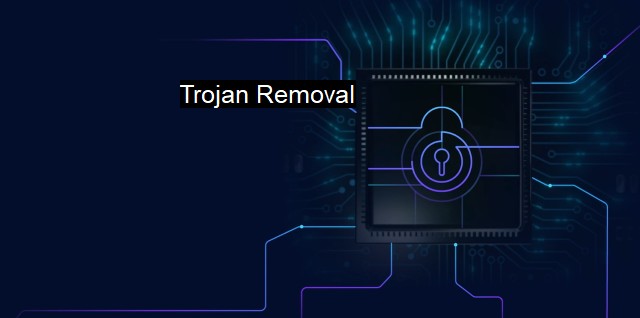What is Trojan Removal?
Combating Trojan Horses: The Need for Trojan Removal Solutions in Cybersecurity
Trojan removal refers to the process of identifying and eliminating Trojan viruses from a computer or a network system. A Trojan or a Trojan horse virus is a type of malware that often camouflages itself as genuine software. Once it finagles its way into a computer system, it can carry out various malicious activities.Trojans stand among the most dangerous and prevalent forms of cyber threats due to the harm they can cause. They can delete, block, modify, or copy data and even disrupt the performance of a computer. Besides, Trojans can create backdoors, enabling cybercriminals to gain control over the infected computer system or network. With the control over the system, a cybercriminal can steal confidential information, including bank account details, credit card information, and identity documents, which they can later use or sell on the dark web for illicit activities.
Given the significant potential damage that a Trojan can cause, softwares made explicitly for Trojan removal henceforth play a critical role in cybersecurity. Antivirus software is typically the primary line of defense against Trojans. They include features to scan and detect the presence of any Trojan in a computer or network system and follow with their removal. Most antivirus solutions offer real-time protection, meaning they are continually scanning and monitoring the activities in a system and can detect any strange behavior that may be caused by a Trojan. This immediate detection allows immediate removal, stopping the Trojan before causing considerable harm.
Trojan removal normally involves a few steps. An antivirus solution first alerts the user of a potential threat after detecting a Trojan. It then puts the detected Trojan in quarantine, which is an isolated environment where the Trojan is isolated from the rest of the system, preventing it from causing any damage. The antivirus software then analyzes the Trojan, which involves learning more about the virus's behavior to improve protection against similar future threats.
Afterward, the antivirus removes the Trojan from the system entirely. Depending on the particular antivirus software, this might involve deleting the infected files or repairing them if possible. The last step, which is also crucial, is done using an updated database with known versions of different Trojans, helping identify and remove them faster. That demonstrates why constant antivirus updates are critical.
Several best practices can help minimize the risk of Trojan intrusion. These include not opening emails or downloading attachments from unfamiliar sources; avoiding websites that look suspicious since Trojans are often hidden in malicious websites; and ensuring your software, including the antivirus software, browsers, and operating system, is regularly updates.
It’s also vital to mention that while cybersecurity tools' role in Trojan removal is undeniable, they may not always provide total protection. This is because continually evolving malware strains can bypass traditional antivirus software and infiltrate a system. Thus, additional security measures, such as using a firewall, regularly updating all software, and employing threat intelligence, should also be taken.
In sum, Trojan removal is a key aspect of cybersecurity, especially given the significant havoc a Trojan can cause. It involves employing robust antivirus software that can detect, quarantine, and remove the Trojan while shielding the computer system against potential Trojan attacks. additional practices, such as regular updates and refraining from suspicious websites, contribute to Trojan protection, reinforcing the notion that Trojan removal is critical in eschewing the very risk of Trojan intrusion.

Trojan Removal FAQs
What is a Trojan?
A Trojan is a type of malware that disguises itself as a legitimate program, but is designed to carry out malicious actions on a computer.How can I tell if my computer has a Trojan?
There are several signs that your computer may have a Trojan, such as slow performance, pop-up ads, and unexplained changes to your files or settings. If you suspect your computer has been infected, it's important to run a virus scan with a reputable antivirus program.Can I remove a Trojan myself?
It is possible to remove a Trojan yourself, but it can be difficult and time-consuming. It's recommended to use a reputable antivirus program that can identify and remove Trojans automatically.How can I prevent my computer from getting infected with a Trojan?
To prevent your computer from getting infected with a Trojan, it's important to practice safe browsing habits, avoid downloading software or attachments from unknown sources, and keep your antivirus software up to date. Regularly backing up your files can also help protect against data loss in the event of a Trojan infection.| | A | | | B | | | C | | | D | | | E | | | F | | | G | | | H | | | I | | | J | | | K | | | L | | | M | |
| | N | | | O | | | P | | | Q | | | R | | | S | | | T | | | U | | | V | | | W | | | X | | | Y | | | Z | |
| | 1 | | | 2 | | | 3 | | | 4 | | | 7 | | | 8 | | |||||||